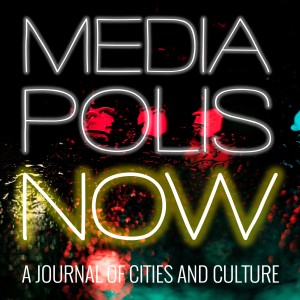
945
Downloads
16
Episodes
Mediapolis Now is the podcast channel of Mediapolis: A Journal of Cities and Culture. Like its parent journal, our podcast puts media and the city into conversation. We are interested in how scholars, artists and other practitioners see the practices, rhythms and motilities of the city through patterns of media use, exposure and desire; and who approach media forms, representations, infrastructures and industries as intrinsic aspects of urban living. Our channel hosts three series, all exploring the junction of cities, culture and media: Voices, in which we interview thinkers and practitioners about their work; Essays, featuring audio readings of selected Mediapolis articles; and Events, audio recordings of recent talks and symposia. Audio Editor: Scott Rodgers Visit the Mediapolis journal website: https://www.mediapolisjournal.com/
Episodes

Thursday Apr 29, 2021
Shannon Mattern on '5000 Years of Urban Media'
Thursday Apr 29, 2021
Thursday Apr 29, 2021
This is a repost of Mack Hagood’s conversation with Shannon Mattern in 2017 on her book Code and Clay, Data and Dirt: Five Thousand Years of Urban Media. When it was first published, it was the first audio interview to appear on Mediapolis. It was also a preview of the podcast Phantom Power: Sounds about Sound, co-hosted by Hagood with poet and media artist cris cheek in 2018. This episode was written, edited and musically scored by Hagood. Special thanks to Orfeas Skutelis at the New School for his production assistance. [Disclosure: Mattern served at the time on the Mediapolis advisory board]
Interview summary:
Media archeology is a field that attempts to understand new and emerging media by examining old and often dead media technologies. Shannon Mattern takes inspiration from the field but notes that most of its “digging in the past” is metaphorical. “What if we took media archeology literally,” she writes, “and borrowed a few tricks from archeologists of the stones-and-bones variety?” Her book Code and Clay, Data and Dirt, released in November 2017 by University of Minnesota Press, pushes us in that direction.
Each chapter moves us farther back in time in an examination of old urban media infrastructures, starting with the sonic technologies of the telegraph and radio, then moving to the urban emplacement of the printing press, followed by an examination of the earliest surfaces for writing—clay and stone—and finally, perhaps the oldest medium of them all, the human voice. Each of these media reorganized the city around itself and each of them is still with us today, as past and future media co-mingle in the present. – Mack Hagood, www.phantompod.org

Comments (0)
To leave or reply to comments, please download free Podbean or
No Comments
To leave or reply to comments,
please download free Podbean App.